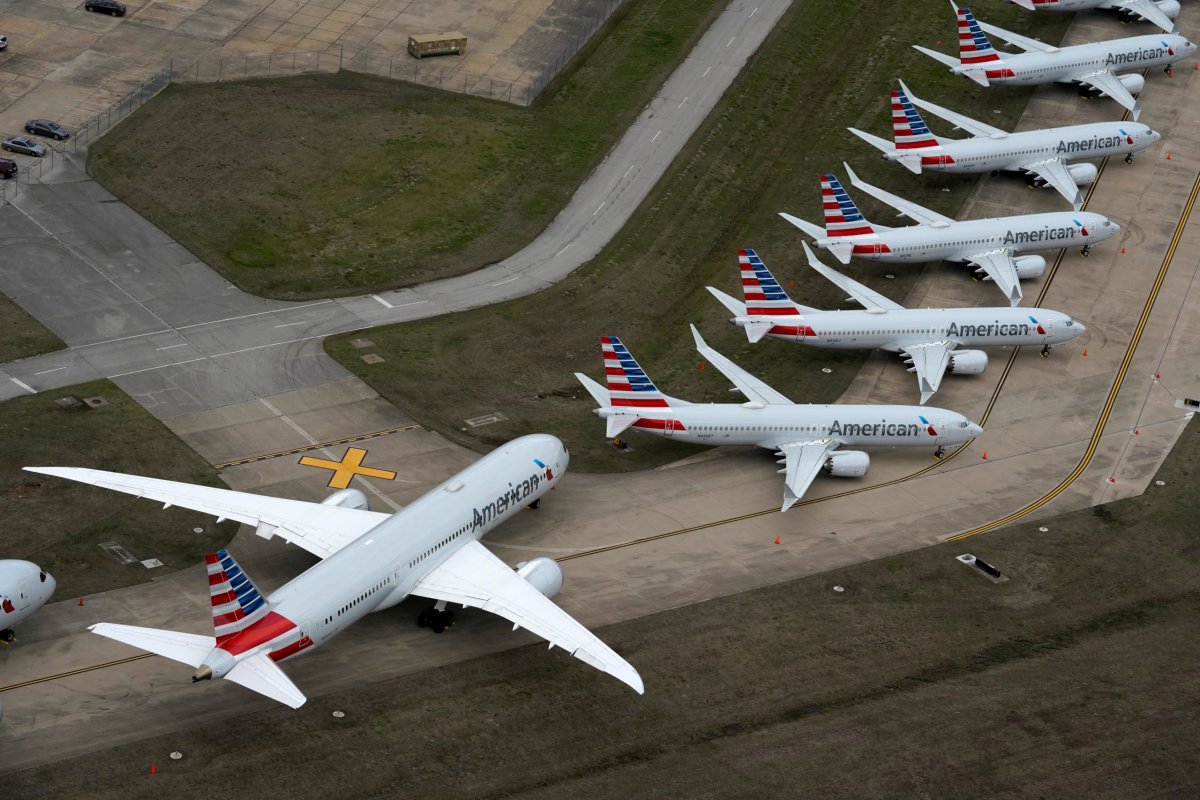CHICAGO (Reuters) – American Airlines Group Inc <AAL.O> is set to sharply increase the number of jets it is planning to retire beyond its announced plans as it accelerates a fleet transformation to respond to the coronavirus crisis, people familiar with the matter said.
Some 4,700 jets have been parked globally as airlines slash operations due to travel restrictions, according to Ascend by Cirium fleet data, and American’s decision confirms industry speculation that many of those older jets will not fly again.
In addition to the retirement of 34 Boeing Co <BA.N> 757s and 17 Boeing 767s announced just two weeks ago, American now plans to also sunset a batch of 76 Boeing 737s it acquired between 1999 and 2001, nine Airbus SE <AIR.PA> A330-300s and 20 Embraer E190s, the people said.
The plans were announced by President Robert Isom in a video Q&A with employees on Sunday, where he said the arrival of new Boeing 737 MAX jets, expected later this year after a prolonged global grounding, could help facilitate the retirement of older jets that would be in need of heavy maintenance.
American is also considering retiring some of its 50-seat regional jets, he said.
American said on March 12 it was accelerating the retirement of its remaining Boeing 757s and 767s as it looks at removing older, less fuel-efficient aircraft from its fleet.
“Decisions beyond the 757 and 767 have yet to be finalized, and we continue to make refinements to our overall fleet plan,” American spokesman Ross Feinstein said, adding that decisions would be based on demand.
Airlines around the world have slashed capacity and even the planes flying are nearly empty. Data firm OAG said the aviation industry was less than half the size it was in mid-January, just before countries started confirming coronavirus cases outside China.
Aside from heavy maintenance needs on the A330-300s and some of the 737s, American was also facing retrofitting costs on some of the 737s. It said on Monday it would be seeking up to $12 billion from a government aid package meant to help airlines manage costs during the downturn, particularly for employee payroll.
The pace of aircraft retirements influences an airline’s cost structure since new aircraft are costly to buy but cheaper to run. It also gives a clue to potential future demand for new aircraft.
Some analysts are predicting a surplus of aircraft as a wounded airline industry emerges from the coronavirus lockdown into what many economists expect to be a broad recession.
But decisions by airlines to retire planes in 2020 and 2021 could trim that surplus, Ascend by Cirium consultancy head Rob Morris told an Airline Economics webinar on Friday.
The last two years saw a total of 1,130 retirements, he said. Aircraft demand is influenced by a combination of new production and the rate at which airlines retire older planes.
Airlines’ fleet plans had been structured around expectations that global travel demand would continue to grow this year and beyond, but now analysts do not expect passenger traffic to recover 2019 levels for some time.
As jets head to parking lots or graveyards, an American 767 landed in Miami from Lima, Peru late Monday in what could have been the final flight for its 767 fleet.
So far American has temporarily parked 135 out of 150 widebodies — including 787 Dreamliners — and more than 300 single-aisle jets, and may continue to park more of its smaller aircraft as the crisis continues, Isom told employees.
(Reporting by Tracy Rucinski; Editing by Tim Hepher, Nick Zieminski and Lisa Shumaker)
























